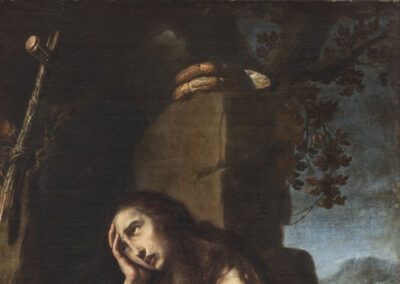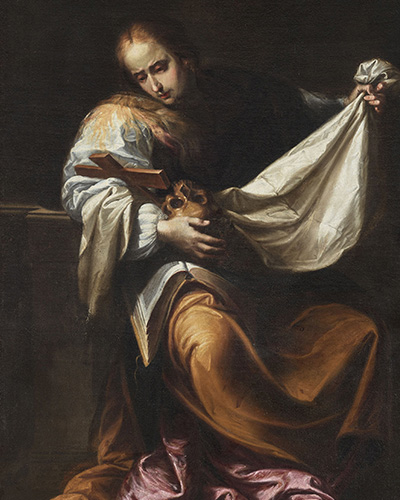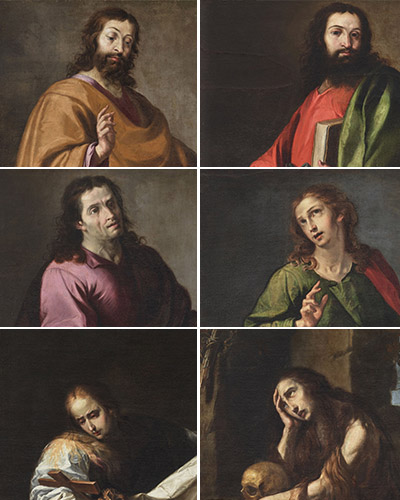Signed and dated in the lower left corner, on vegetation that makes it difficult to read, but in which the year 1658 can be clearly distinguished, which has been used to date the painting of the Magdalen with which it is paired, in which only the first three digits leave no doubt, and the entire series in which it is included.
The iconography of this Egyptian ascetic had become so confused with that of The Magdalene that the artist was obliged to inscribe "S. Maria geciaca" on the edge of the stone on which the saint kneels. In the Western tradition, this representation is based on a late 13th century French poem about her life, according to which a young woman of licentious life goes on a pilgrimage to Jerusalem where an invisible force prevents her from entering the church of the Holy Sepulchre. Repentant, after imploring forgiveness and promising to make amends, she manages to enter the temple and there the relic of the True Cross urges her to purify her soul, so she withdraws to the desert to pray and do penance with no other possessions than three loaves of bread on which she will miraculously live the rest of her sixty years of life.
In this canvas Llanos Valdés concentrates on the essentials of the story, depicting the saint inside a cave presided over by an austere wooden cross, covered only by her long hair and kneeling before a skull resting on a thick open book. The empty bowl and the two and a half loaves of bread evoke the miracle of her long life subjected to an iron penance to make reparation for her previous sinful existence. The distant landscape in the background is here merely a reference to the desert to which the saint withdrew and not a pretext for painting an Arcadian landscape.
For more information, please see the file of the ensemble to which it belongs by clicking on the image below.




